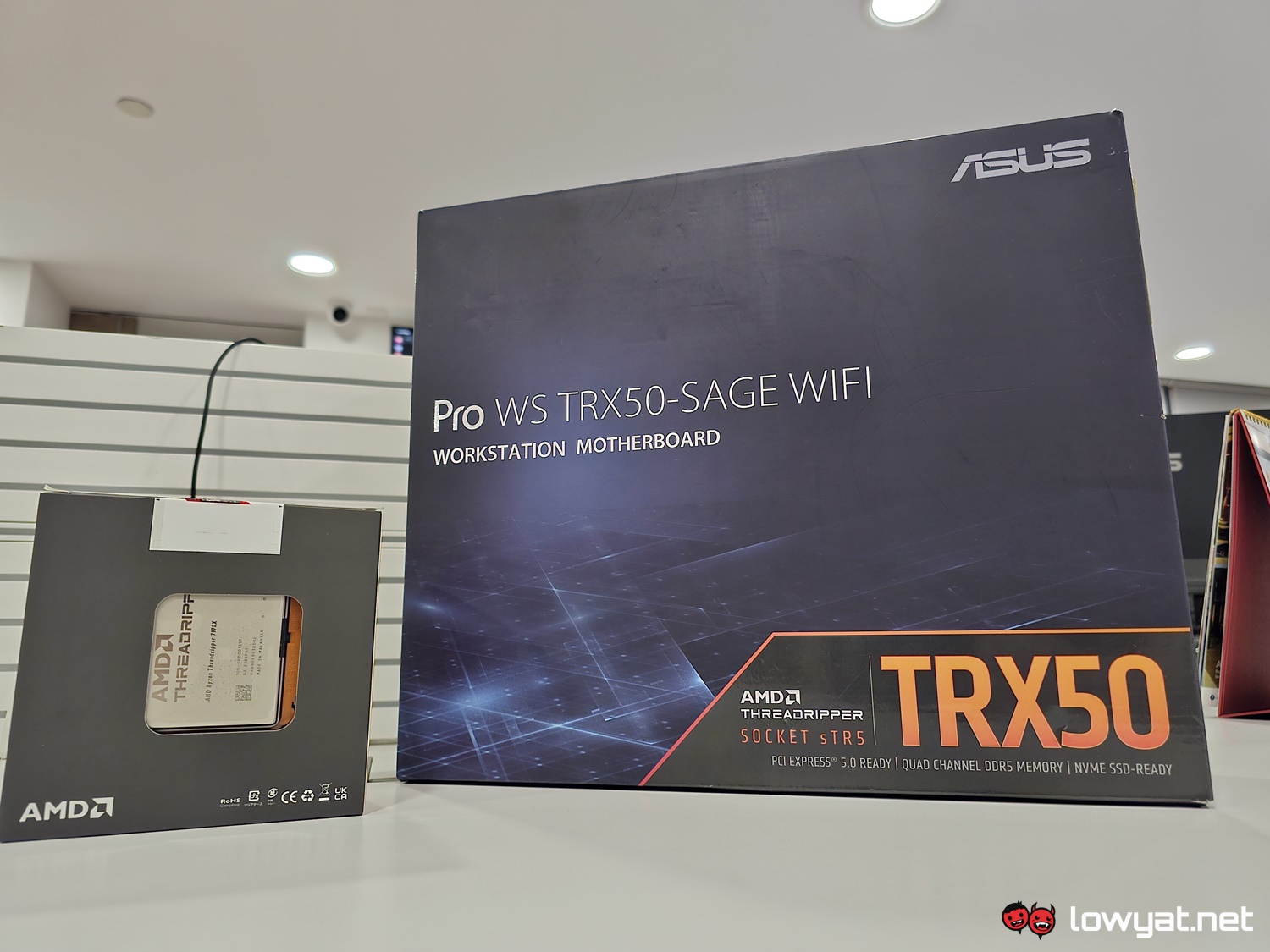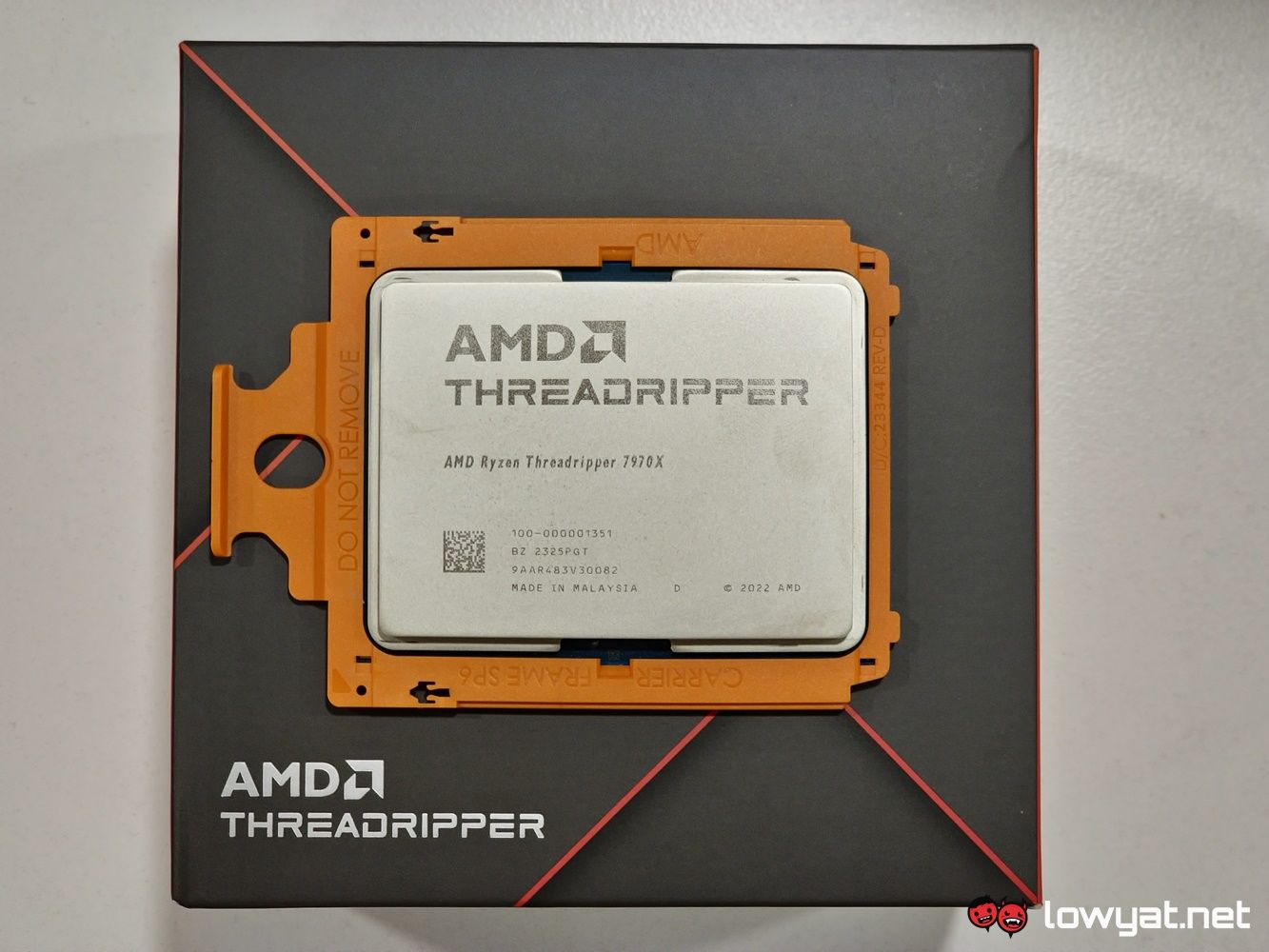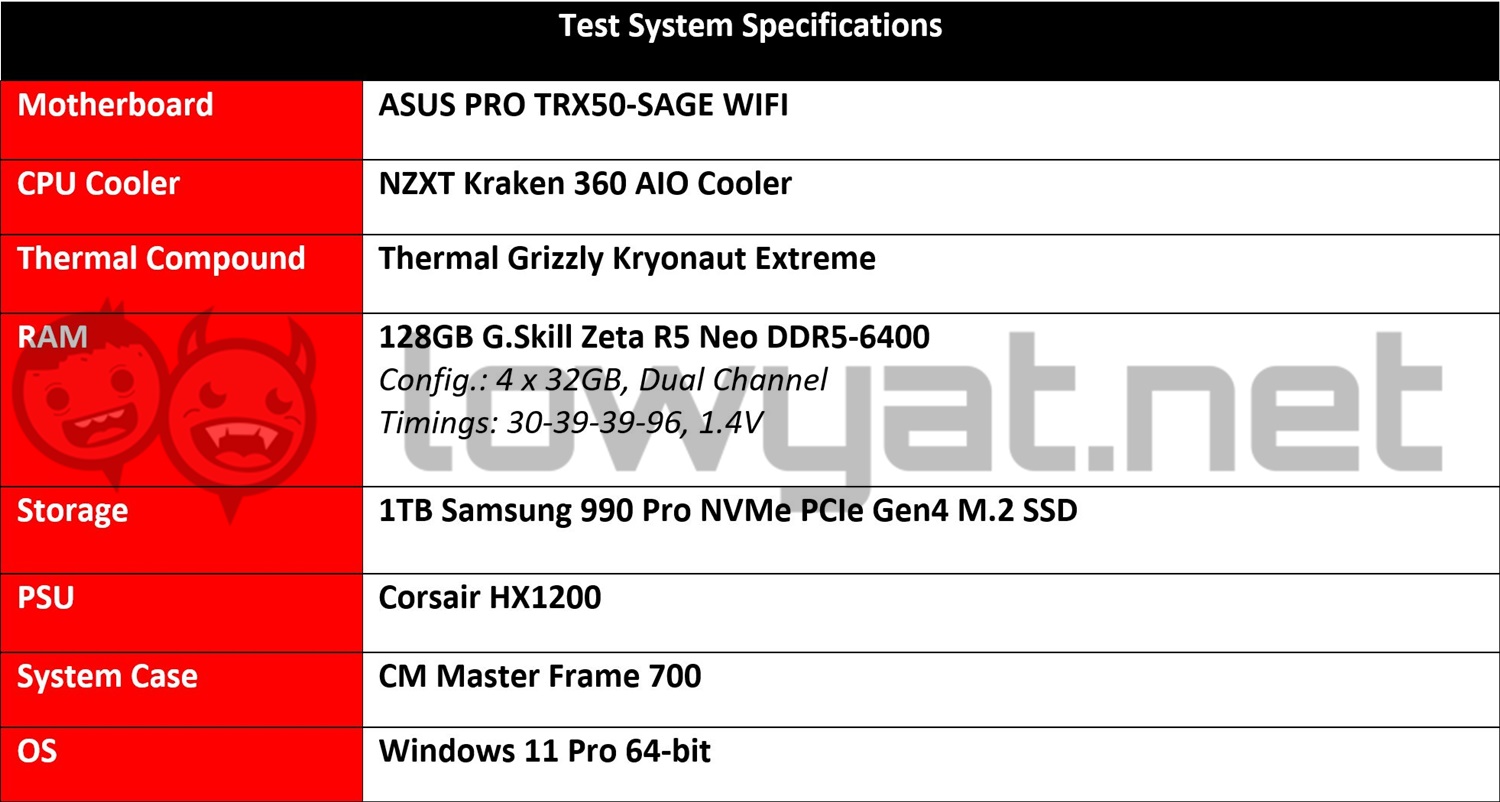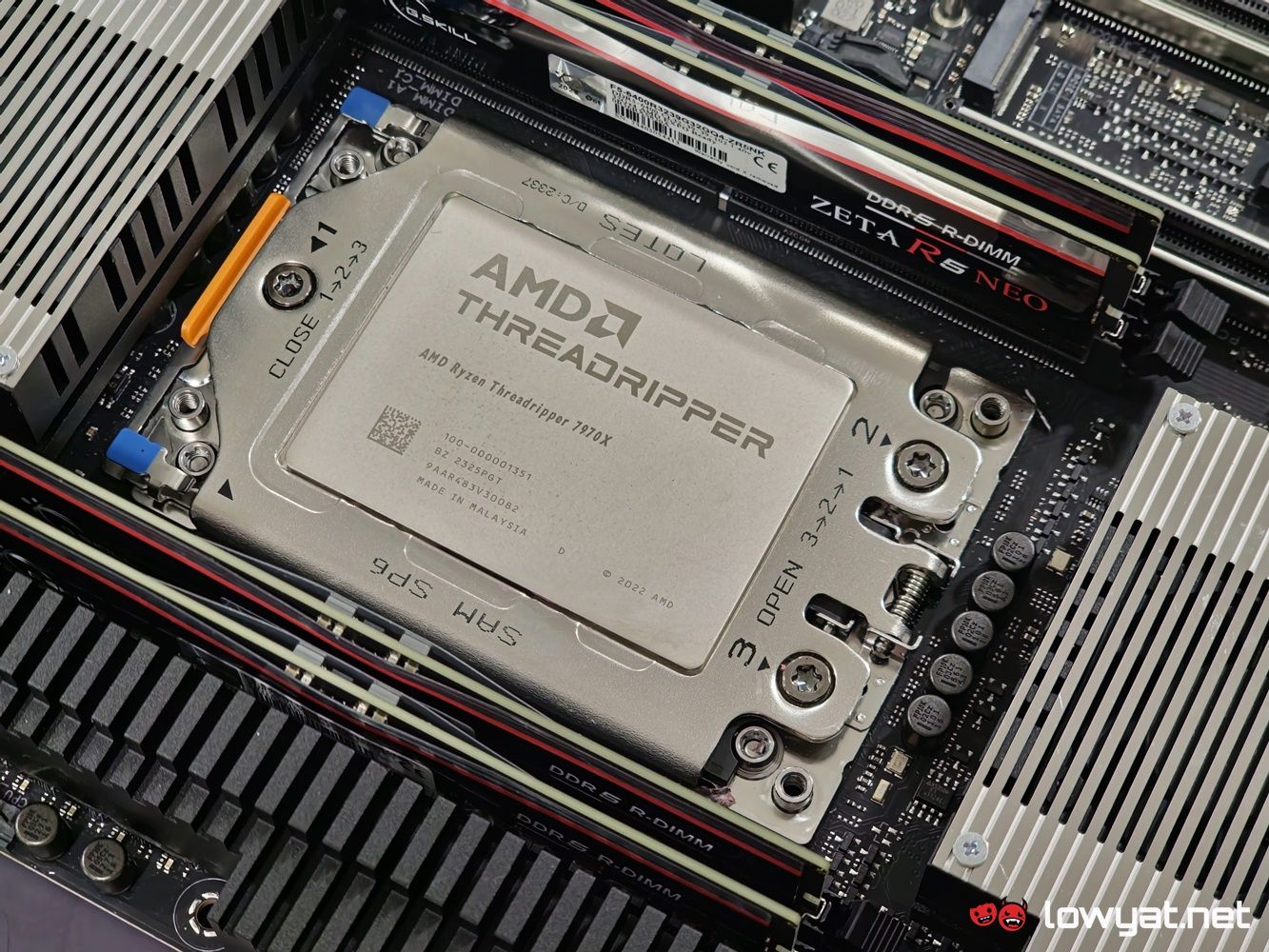In my review of the AMD Ryzen Threadripper 7980X, I had mentioned that the chipmaker had also provided me with the AMD Ryzen Threadripper 7970X. This HEDT CPU is the second of three SKYs in this lineup but despite it being a step down in the order of things, it does have its moments against its more core-packed sibling.
So, with that out of the way, let’s get right into how much of a beast this HEDT CPU just is.
Specifications
Design

As I have covered most of the details about AMD’s Threadripper 7000 Series before you, I’m going to speed through and just give the broad strokes of the 7970X. I’ll start by getting the obvious out of the way: this processor has half the cores of the 7980X at 32-cores and 64-threads. Say what you will but at twice the number of cores than even the highest-tier consumer-grade Ryzen 7000 Series CPU and again, that’s a boon for professionals in the graphics, architecture, medical, and scientific industries.
Like the 7980X, the packaging for the 7970X has been streamlined to a simple packaging: AMD has ditched the hard, uniquely designed plastic packages that were used to theatrically elevate the prowess of the HEDT CPU, opting instead to use the same packaging design that it uses with its non-HEDT Ryzen 7000 Series. Inside, you get the basic set of all Threadripper CPUs – the Torque screwdriver and the special CPU cooler bracket.
Testbench
The testbench remains the same from when I tested the 7980X. Again, AMD was gracious enough to provide me with a full kit for the duration of my time with both HEDT CPU. To quickly recap, the motherboard is a TRX50-SAGE WIFI that caters specifically to the non-PRO Threadripper CPUs but should you be one of the fortunate souls to possess a Threadripper Pro WX 7000 Series CPU, it’s compatible. On top of that, the brand also provided us witha 360mm AIO cooler from the NZXT, as well as a whopping 128GB DDR5-6400 RAM from G.Skill.
Additionally, AMD sent over a BIOS update that we also applied to the chipset, to eliminate any possible bottlenecks and performance issues.
Benchmarks, Temperatures, and Power Consumption
 The 7970X certainly knows how to wow, even if it isn’t high up on the ladder of the Threadripper 7000 scale. On a synthetic level, it’s a close race between it and the 7980X in UL’s 3DMark and PCMark 10 benchmarks.
The 7970X certainly knows how to wow, even if it isn’t high up on the ladder of the Threadripper 7000 scale. On a synthetic level, it’s a close race between it and the 7980X in UL’s 3DMark and PCMark 10 benchmarks.
In the Blender and suite of Cinebench benchmarks, though, the lower core counts of the 7970X certainly begin to show. In Blender, especially, the CPU processes the tasks approximately five minutes slower, while in the three Cinebench tests, the 7980X absolutely leaves its sibling in the dust in the multi-core tests, but not in the single-core tests. Regarding that last point, the gains aren’t by a huge stretch but I must say, I am surprised that it can overtake the more premium HEDT CPU.
Gaming is yet another anomaly for the 7970X. Throughout the review process, the CPU appears to have its moods, ranging wildly between the two resolutions. The only constant in this segment of the testing is that, with DOOM Eternal, the processor has the 7980X beat on both fronts. Beyond that, it was basically just playing tag with its sibling.
As power consumption and operating temperature, the 7970X pretty much mirrors the numbers of the 7980X, and understandably so. Both HEDT processors have a peak TDP of 350W, and their peak operating temperatures never once went beyond 90°C. That temperature held, even when put through built-in stress tests from the Cinebench test programs, as well as PCMark 10. On a side note, the CPU was also reaching clockspeeds of 5.6GHz, despite its advertised boost clocks of 5.3GHz.
Conclusion
To end this review of the Ryzen Threadripper 7970X, I’m going to rehash what I’ve said about the Ryzen Threadripper 7980X here: As a productivity-based component, there is both concrete evidence and little doubt that this HEDT CPU shreds through the rendering tests in Blender and all three Cinebench benchmarks. But even more impressive? Its maximum TDP of 350W is only ever so slightly higher than even the highest-end consumer CPUs that are currently available on the market.
However, as a day-to-day CPU, I cannot imagine that anyone would be willing to spend upwards of US$5,000 (~RM23,365) on a CPU, and that’s before you factor in the cost of other components, such as the motherboard and RAM. Not even the creme de la creme of GPUs, be it from team Green or Red, even come close to that price tag, let alone to total cost of a fully kitted out desktop rig.
Follow us on Instagram, Facebook, Twitter or Telegram for more updates and breaking news.















